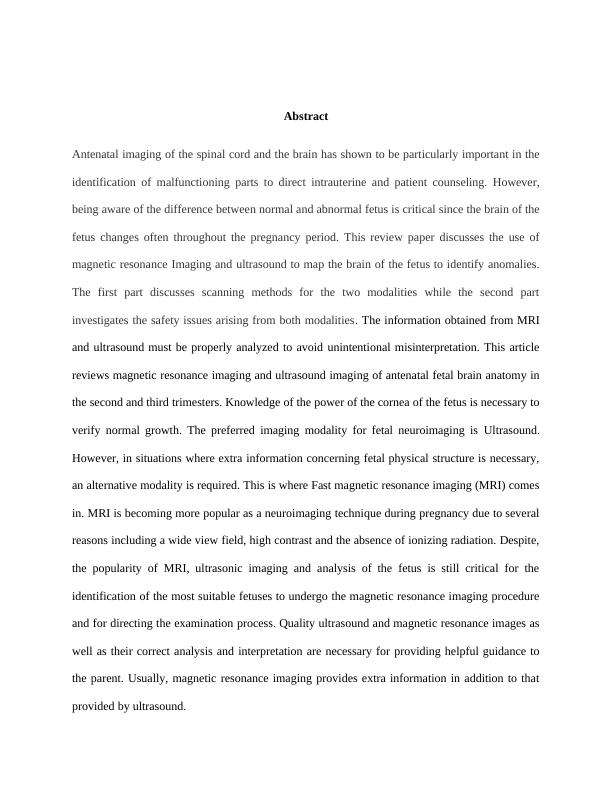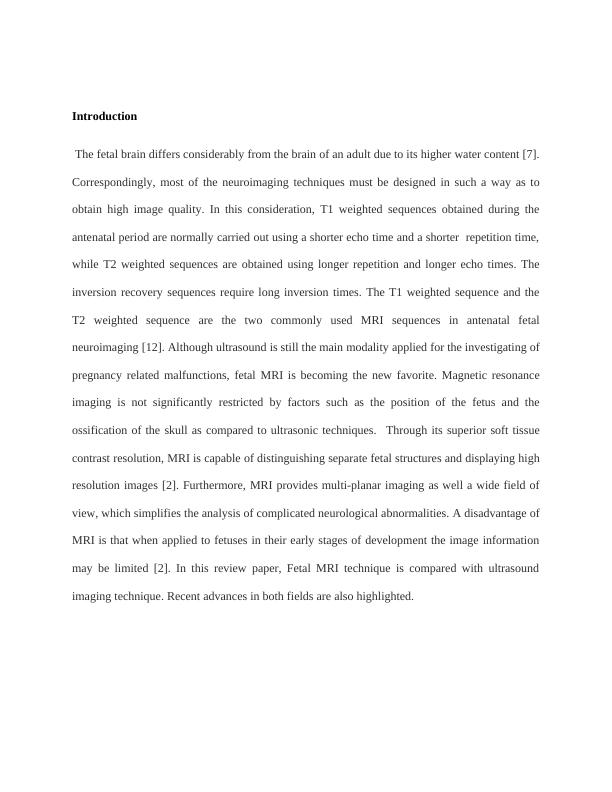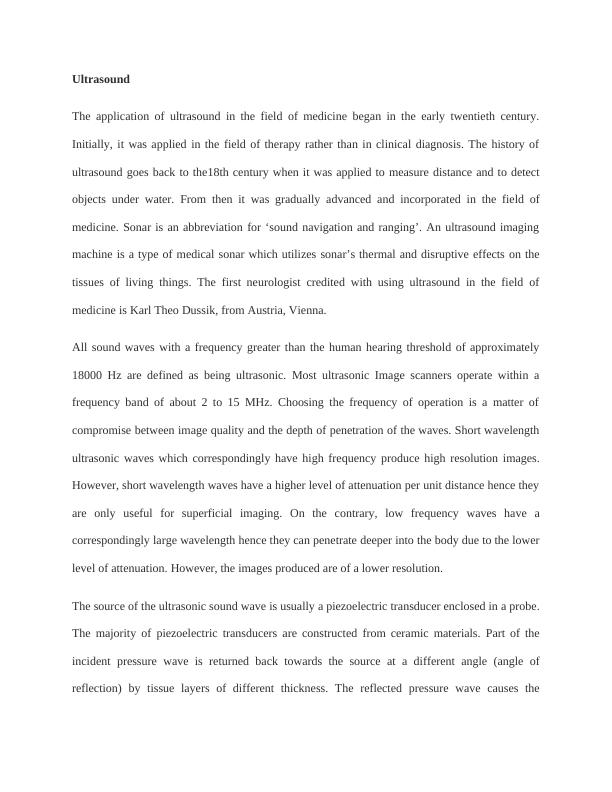Magnetic Resonance Imaging Versus Ultrasound in Fetal Neuroimaging
Write a review paper on a specific topic relevant to Medical Radiation Physics, with a focus on clinical data and using physics to support the understanding of the topic. The report must be 2500 words long and follow the formatting guidelines of a chosen scientific journal.
12 Pages3656 Words287 Views
Added on 2022-11-14
About This Document
This review paper discusses the use of magnetic resonance Imaging and ultrasound to map the brain of the fetus to identify anomalies. The first part discusses scanning methods for the two modalities while the second part investigates the safety issues arising from both modalities.
Magnetic Resonance Imaging Versus Ultrasound in Fetal Neuroimaging
Write a review paper on a specific topic relevant to Medical Radiation Physics, with a focus on clinical data and using physics to support the understanding of the topic. The report must be 2500 words long and follow the formatting guidelines of a chosen scientific journal.
Added on 2022-11-14
ShareRelated Documents
End of preview
Want to access all the pages? Upload your documents or become a member.
Magnetic Resonance Imaging Critique
|12
|2688
|76




